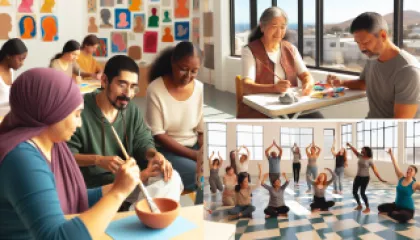Mastering Creative Therapy: A Comprehensive Guide
1 year ago
Creative Therapy
How Can Schools Effectively Prevent Bullying?
1 year ago
Bullying Prevention
Understanding Stress vs. Anxiety: A Comprehensive Guide
1 year ago
Stress vs Anxiety
Rethinking Academic Stress: A Personal Perspective
1 year ago
Academic Stress
Mastering the Art of Overcoming Resistance: A Comprehensive Guide
1 year ago
Understanding Resistance
Sparking Change: My Journey to Inspire and Motivate Others
1 year ago
Motivating Others
The Crucial Role of Trust Building in Strengthening Relationships
1 year ago
Trust Building







